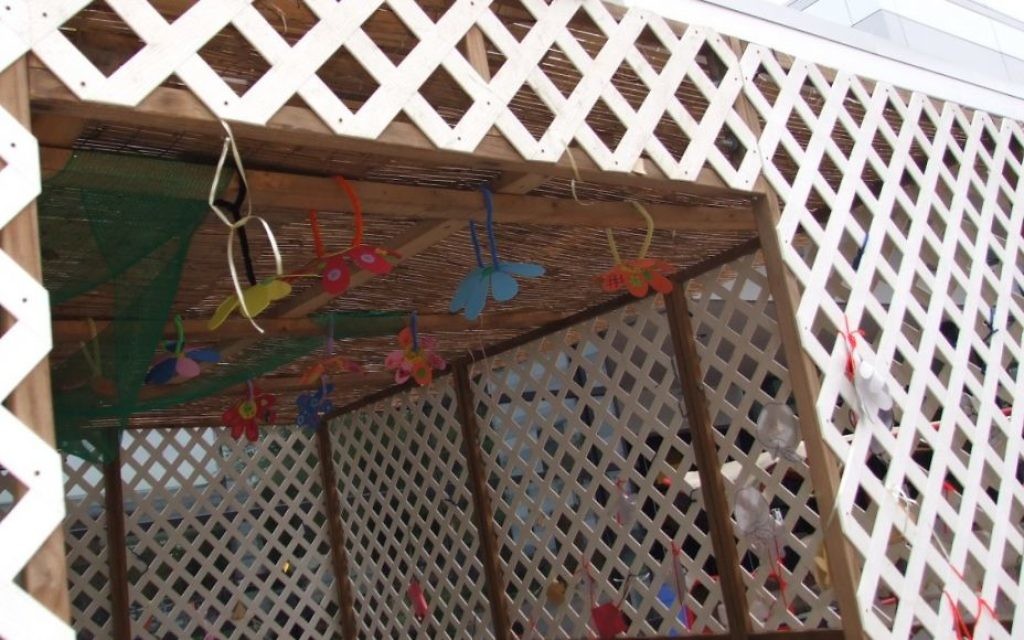Temporary Windows on Joy and Life
High holidays and Sukkot serve as reminder about permanents of life's ups and downs.
I love the back room of my house, with three walls of large windows that reach toward the ceiling. During the day the room is bathed in light, and the view is of a dense patch of trees. It’s an extraordinary sanctuary blending the inside and outside worlds.
That was how I saw it, at least until last month when the forecasts began to predict that Irma might arrive with force in Atlanta.
Along with everyone in the region, I was unsure of the potential impact. Patio furniture was put away, the grill and plants brought inside. But there was nothing to be done about the possible danger of the trees and the fragility of the windows.
Get The AJT Newsletter by email and never miss our top stories Free Sign Up
In all likelihood, there was no significant difference between the threat to the rest of the house and my sunroom, yet I worried most about that room. The very windows that generally make it so appealing laid bare the possibility that the outside would come in.
We were fortunate. The storm did not touch our house. Our windows and trees remained in place. Not so for everyone.
We all know people who lost trees, windows, power, water, roofs and more because of Harvey, Irma or Maria.
I was thinking about them as I sat in synagogue on Yom Kippur. Though we all know that death can take us at any moment, most of the time we push that knowledge aside so as not to let it interfere with the business of living.
On Yom Kippur we are forced to confront that sobering reality. The rituals of the day are funerary in nature. No food, no water, no bodily pleasures. All meant to remind us that nothing is permanent. A reminder eerily similar to those provided by the recent storms.
Traditionally, the time after Yom Kippur is a time of great celebration. We have survived another year. We have made it through Yom Kippur. Once again we are able to push our concerns about the precarious nature of our existence to the back of our minds. The storm has passed; I can carelessly return to sit in the sunroom with the windows and live without worry.
Except that there is another tradition. At the close of Yom Kippur, we are meant to build a sukkah (hut) for the next holiday, Sukkot. By design a sukkah is temporary in nature, open to the sky.
Yom Kippur reminds us that none of us knows if we are destined to survive. None of us can truly avoid all disaster. At some point we will face loss, danger or destruction. And as we flow into Sukkot, we are reminded that if we survive, we will need to rebuild.
Rebuilding after devastation is hard. Often the frameworks that we cobble together after disaster hits, whatever form it takes — the loss of a job or marriage, the loss of health or a loved one — are, by necessity, temporary like the sukkah. As we recenter ourselves, we are all too aware of the gaps.
But unlike somber Yom Kippur, Sukkot is meant to be z’man simchatenu, the time of our happiness. Because even difficult times can have their elements of joy, those moments the gaps are filled not only with darkness, but also with starlight and possibility.
And when we avoid difficulties, it is easy to fall back into a false sense that we are impervious to danger. In those moments, the celebration of Sukkot reminds us that joy, however wonderful, has an element of the impermanent. It may stay, or it may go. A realization that should heighten our compassion for others who are less fortunate and our appreciation of the gifts we have. It is upon us to savor what is, lest we miss those gifts altogether.
After the recent storms, after Yom Kippur, I have returned to my sunroom. Once again, there is pure joy in reading a book under a skylight or watching birds perched in a tree. Even as I cherish these moments, I know the delight they bring is impermanent. It heightens awareness of the leaves that have fallen and the shortening of the days and reminds me that these windows are no magic barrier against all that might be.





comments